-
Posts
1,780 -
Joined
-
Last visited
-
Days Won
8
Content Type
Profiles
Forums
Blogs
Gallery
Events
Store
Posts posted by azyeoman
-
-
An interesting Cape of Good Hope Medal with Bechuanaland clasp officially named to Pte. M. Whitaker, Cape Police who is also entitled to a QSA (with clasps) & KSA (with two clasps).
If anyone knows of Whitaker's QSA & KSA pair, please contact me.
930 Pte. M Whitaker served with the Cape Police District 1 and received his Cape of Good Hope medal to him as a private, but his KSA as a corporal. He was captured and held as a PoW and later released on 6 June 1900 at Waterval.
Waterval was a farm which gave its name to a railway station on the Pretoria-Piertersburg railway line in the South Africa. (Wonderboom District; Gautang), 20 km north of central Pretoria. There were around 3,000 British prisoners released on 6 June 1900 by a squadron of the 2nd Dragoons (Royal Scots Greys) under the command of Captain F. S. Maude. The station became a base for British columns operating in the district.
For more info on the Cape Police see: https://www.angloboerwar.com/unit-information/south-african-units/310-cape-mounted-police
0 -
http://www.navalbrigade.nl/en/
He found the photo here. It's a Naval Brigade site and so unfortunately won't have photos of the Canadians.
0 -
QSA with five clasps: CC, OFS, TRANS, SA1901, SA1902 named to: 4294 PTE L M GOLDIE. 1ST DGN GDS .He was taken PoW and later released on 23/5/1901 at Bankplaats. (WO 100/112 p. 79)Leslie Martin Goldie was born in 1879 in Dunoon, Arglyllshire, Scotland. He was the son of Edward Goldie who later lived on New Chesterfield Street in Marylebone, London. He married Margaret Maker at St. Calhoune in Dublin on 2/9/1908. He was a printer by trade and enlisted on 29 August 1898 in the 1st Dragoon Guards in London. He had previously served in the 1st Midd Royal Engineers Volunteers. He was 5'6" and weighed 121 lbs with a fresh complexion and brown hair and eyes. He had a scar on his right cheek and blue dots on his left forearm. He served at "home" from 29/8/98 to 15/1/01 when the regiment left for S. Africa. He served there from 15/1/01 until he returned home from 24/3/02 to 12/9/02 and then again in S. Africa from13/9/02 to 14/11/02. He returned to the UK and served until 28/6/06 when he transferred to the Army Reserve for the next two years. He had served a total of 12 years by then. When WWI broke out, he reenlisted in London, and was D/13943 Sergt. Leslie Martin Goldie in the 5th Dragoon Gurards. He died in France and Flanders on Wednesday, 31 October 1918, a mere 12 days before the armistice and is buried in St. Sever Extension Cemetery in Rouen, France plot K 16.Sadly Goldie's WWI medals are missing and if anyone knows their location, please contact me as I would like to reunite the group.South AfricaThe regiment sailed on the Maplemore on 8th January 1901, and arrived in Cape Colony about the end of that month, in time to take part in the pursuit of De Wet, but without allowing time for men and horses to get into the campaigning condition essential for so arduous a task. This disadvantage notwithstanding, the regiment was able to be of great service. In his despatch of 8th March 1901, para 9, Lord Kitchener refers to their "timely arrival", and says that the 1st King's Dragoon Guards, Prince of Wales's Light Horse, with G Battery RHA, brought from Pretoria, to be joined later by the 3rd Dragoon Guards, were formed into a brigade which was placed under Colonel Bethune,—evidently the brigade whose doings are graphically described by 'Intelligence Officer' in On the Heels of De Wet. After describing the exciting chase, Lord Kitchener says, "The close pursuit of the various columns had the effect of driving De Wet north to the Orange River, west of Hopetown, where, being hotly pressed by General Plumer, his 15-pounder gun and a pom-pom were captured by our mounted troops under Lieutenant Colonel Owen, 1st King's Dragoon Guards". De Wet eventually got across the river, but over 200 prisoners, all his guns, ammunition, and waggons fell into our hands. "He undoubtedly quitted Cape Colony with great loss of prestige".
Colonel Bethune's force, strengthened by six squadrons Imperial Yeomanry, was then taken to the north-east of the Orange River Colony, and along with other columns operated there under General Elliot for the greater part of 1901. At the end of July General Elliot arranged his columns for a sweep west of the Kroonstad Railway, the 1st Dragoon Guards and two guns being put in a separate column under Colonel Owen. "On 2nd August near Graspan Captain Quicke, King's Dragoon Guards, of Colonel Owen's column, with two squadrons of his regiment, effected the capture of a laager of 65 waggons and 4000 cattle". The regiment was constantly hard at work until the end of the campaign. They came late on the scene, but made up for lost time, always doing well.
Four officers and 1 non-commissioned officer who had been attached to other units were mentioned in Lord Roberts' despatches of 2nd April and 4th September 1901. Three officers gained mention in Lord Kitchener's despatches during the war, and in the final despatch 3 officers, 2 non-commissioned officers, and a private were mentioned.
http://armyservicenumbers.blogspot.co.uk/2012/12/1st-kings-dragoon-guards.html
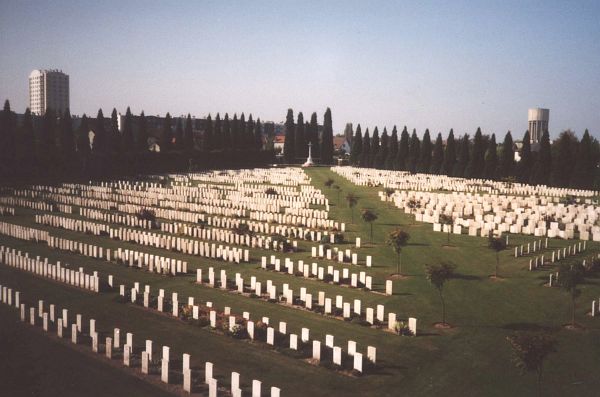
 0
0 -
Here is one of the most desirable PoW medals for the Anglo-Boer War. It's a medal to a gunner who served with the 66th Battery, RFA at the battle of Colenso, which was Britain's third defeat during what became known as "Black Week" in December 1899.
84230 Gunner Patrick Murphy, 66th Bty. R.F.A. was born in Carlow. He was the son of Peter Murphy and his brother was John E. Murphy. He was a farm laborer. He married Amelia Wilson of Bristol, and they had three children: Louis William John (20.9.1895), Gladys Amy (29.7.97) and Lillian Audrey (2.6.1900). On 23 March 1891, he enlisted in the Royal Artillery, but his papers were signed on 27 March at Woolwich and state that he was 18 years old, which would mean he was born in 1883. He was 5'6" and weighed 137 lbs, and had grey eyes and brown hair. What makes me wonder about his birth date, which was not written on the duplicate papers, is that on 18 January 1892, he was awaiting trial for fraudulently enlisting while he was a serving soldier of the Royal Dublin Fusiliers - 3297 Pte. John Bolger. He was convicted and spent 42 days in prison from 18 February to 5 March 1892. Upon his release, he rejoined the RA and "transferred" to Gunner on 18 February 1899.
Next on his papers is that he was recalled to the colors on 9 October 1899 and posted to the RA. He served in South AFrica from 23 October 1899 to 15 October 1900 (358 days) before going home. His total service at home was 11 years 339 days from 23 March 1891 to 22 October 1899 and then from 16 October 1900 to 17 February 1904. His sole injury was a broken right hand on 29 August 1898.
He was awarded the QSA with: T, RL and OFS clasps (WO 100/142/p.141). He was serving with the 66th Bty. RFA in S. Africa when he was captured on 15 December, 1899 at the famous battle of Colenso where the 14th and 66th batteries took up a positions 700 yards from the south bank of the river and were immediately engaged by 1,000 Boer riflemen hidden on the north bank. In the ensuing battle, casualties mounted in both batteries and ammunition was low, which forced the men to retire with the wounded to a donga to the rear of their 12 guns. General Buller wanted his guns back and called for volunteers to rescue them. Capt. Schofield (ADC) and Cpl. Nurse RFA went with two limbers and managed to rescue two of the twelve guns. They were later awarded VCs for their bravery. (For an excellent account of the battle, read Darrel Hall's Halt! Action Front! with Colonel Long at Colenso printed by Covos-Day books, 1999).
Murphy was later released at Waterval on 6 June 1900. The 66th suffered 4 KIA, 10 WIA - one of which died of wounds later and 24 PoWs according to the Army & Navy Gazette (p. 1217).
For more information read:
http://www.historyofwar.org/articles/battles_colenso.html
http://samilitaryhistory.org/vol017cc.html
https://www.britishbattles.com/great-boer-war/battle-of-colenso/
and watch
0 -
-
-
A recent addition, which has been rather difficult to locate is a PoW to a New Zealander for WWII. Unlike WWI when there were just over 400 PoWs, in WWII there were over 8,000 "Kiwi" PoWs, which statistically was about one in 200 of New Zealand's citizens in uniform - fairly high to say the least. Most were captured in: Greece, on Crete and in North Africa. This interesting group is to a man who was wounded and subsequently captured during the epic battle on Crete.
35650 Pte. Reginald R. Wilson was a lorry driver before the war, and lived at 54 Moxham Avenue, Hataitai, Wellington. He enlisted in the infantry and listed his next of kin as his sister Mrs. F. Barrowman, C/O Stationmaster's House, Ashurst. He left New Zealand between 1 July 1940 and 31 March 1941. He went to either Sydney, Australia or Bombay, India and eventually went to N. Africa where he became entitled to the African Star.
Later Australians and New Zealanders (Creforce) were sent to defend Crete, and Wilson took part in the heroic defense where he was shot in the left femur and in the right shoulder on 20 May 1941. He was originally reported as "presumed dead" in the paper. (see photo of Wilson with caption) He was admitted to hospital ten days later on 10 May 1941, and must have had a miserable and horrible time of it while waiting for substantial medical treatment. The 4/5 page medical records give his entire treatment and state that his left leg was amputated on 29 July 1941 while a PoW and at the 5th Australian General Hospital. Creforce surrendered on 1 June 1941 and 6,500 Commonwealth troops were captured of which 2,100 were New Zealanders. It was the largest number of New Zealanders captured in one battle during WWII. Wilson was eventually transferred to Stalag IXA in Zeigenhain, Germany. Most interestingly, there are two photos of Wilson convalescing in bed after his amputation. Wilson survived the war and was issued a Disabled Soldier's Permit on 8 February 1945 by the New Zealand Railways to travel first class until 31 January 1946.
He was obviously proud of his service as he wore his medal group, which consisted of the: '39 Star, Africa Star, War Medal and New Zealand War Service Medal, which was issued to about 240,000 New Zealanders. Note there is also his cloth wound stripe stapled to the original paper.
For more information on the Battle of Crete, see https://nzhistory.govt.nz/war/the-battle-for-crete
and in particular, https://nzhistory.govt.nz/war/the-battle-for-crete/capitulation-capture
The last photo is of the main street in Stalag IXA.
0 -
Here is a rare medal that is sadly missing its companion BWM officially named to: 64847 Pte. Daniel James, NZEF, who served in E Co. 1st Bn. Cantebury Regt. and was one of only 414 New Zealand PoWs in WWI.
Daniel James. was born on 1 October 1883 in Cardigan, South Wales to his father Daniel James and his mother Sarah James. They were C of E and apparently later lived with a friend Mr. J. Lovatt at 5 Tutanic Road, Grey Lynn, S. Wales but by 14 November 1918 they were no longer there. Daniel, the son, went to New Zealand where he was a coal miner for Thorpe Enginerring in Mangapai. He lived at the People's Palace in Auckland. He was 5'3.5" tall and weighed 140 lbs. He had brown hair and blue eyes with a fair complexion. He had a scar on his left arm and thumb and had suffered from typhoid when he was six years old.
James enlisted and was paid five shillings when he was 33 years old on 6 September 1917. Company E embarked on the Managanui 96 on 21 November 1917. During the voyage he was transferred to Co. D. He disembarked in Liverpool on 8 January 1918. After a couple of months training, he embarked for France from Sling on 19/20 March 1918 and disembarked on the 24 of March at Etaples. James joined the Bn. on the 28th of March and was in the 1st Co. as of 12 April 1918. He was reported injured and with influenza on the 22 of April. On the 30th of September he was listed as missing, and later a PoW captured on that date. He arrived in Ripon, N. Yorkshire on the 9th of December 1918 and was admitted to No. 2 New Zealand General Hospital on 12 December 1918 with influenza. He was demobed on 15 April 1919 and officially discharged at his request in England on the 18th of April 1919 after serving a total of one year, 222 days. During his time in the forces, he had on one infraction against him when he lost his rations on 26 April 1918.
He may have stayed on to see his parents. But later immigrated to Australia and stayed at 14 Oak Street, Garden Village, Gorseinon (sic), South Wales, near Newcastle N.S.W. By the 25th of July 1924 James had his BWM and Victory medals.
Daniel James' file is: https://archway.archives.govt.nz/ViewFullItem.do?code=18052740&digital=yes
The link for all the NZ WWI PoWs where James is listed is: http://freepages.genealogy.rootsweb.ancestry.com/~sooty/ww1germanyprisonersofwar.html
For more information on the regiment, please go to: https://nzhistory.govt.nz/war/infantry-units/canterbury-infantry-regiment
0 -
-
Great additions! Great research and write ups! Thank you for sharing!
0 -
A quite rare German made PoW badge for Doeberitz with original case. The badge is made of silver and has blue and white enamel.
The badge was designed by Mr. Cecil A. Tooke, O.B.E. who was a PoW at Doebertiz. He drew this coat-of-arms for his fellow prisoners showing three cartridges, representing three prisoners who had been shot; a skilly bowl, lampooning he deplorable "soup"; a sailor tied a post, showing the favorite German punishment, and a crossed pick and shovel. The motto, "Always Merry and Bright" is beneath the arms. The Germans thought the arms and motto were a heart-felt tribute to the amenities of the camp and wanted to use them for propaganda, and the Camp Comandant, Colonel Alberti congratulated Tooke and asked him to repeat the design for mass circulation. Berlin jewelers used in on all kinds of trinkets; e.g., the badge, Eventually the German War Office realized it was a sarcastic badge from an article in an English newspaper and after severe reprimands, the badge and trinkets were withdrawn. Post war, Tooke went on to design the coat of arms for the Auxiliary Fire Service.
Please note that the badge is impressed with the silver content of 935, which is oddly higher than the usual 925.
0 -
-
An seemingly common pair, but in reality, one that is quiet scarce to rare. A WWI pair named to G-11496 Pte. F. Hughes. The Queen's R. He was a PoW and after the war received the watch fob that was given to those who returned. It's scarce alone, to say the least, to find the fob, but to find it with the pair is rare. Frank Hughes is confirmed on page 41, line 22 of the Queen's PoW registry. He was from Camberwell, London. See the link for the Pdf below the photographs.
In 1919, a reception was held in for 270 repatriated other rank PoWs from the Queen's Royal West Surrey Regiment in Guildford. A small commemorative medal, which could be worn on a watch-chain was given to each man. The Surrey Advertiser printed a list of the men of which most came from places within the regimental recruitment district or from within Surrey. There was a total of about 2,100 other ranks of the Queen's Regiment who were PoWs.
0 -
1914/15 Star, British War & Victory Medals, Long Service & Good Conduct Medal Royal Navy GV Third Type with a quantity of original documentation and copy photo to Private Edward White, Royal Marine Light Infantry a former Labourer born in Warblington, Emsworth, Hampshire in 1876. Attesting for the Royal Marines at Eastney in June 1894 he joined Portsmouth Division in February 1895. Serving ashore and afloat when War broke out he was serving at the Navigation School at Dryad as base security staff. Returning to Portsmouth Division in October 1915 he joined HMS Queen in October 1915 and the Submarine B11 in January 1916. Returning to Portsmouth Division in November 1916 he joined Defensively Armed Merchant Ships as a Gunner and was aboard the SS Corso when she was sunk by the German Submarine U-64 commanded by the U-Boat Ace Robert Morhat on 19th February 1917 in the Mediterranean 100 miles SW off Malta. Taken prisoner of war along with the Master and Chief Engineer he remained in captivity until December 1918. Demobilized in March 1919 he attested for HM Coastguard and served for 5 years. White slipped through the LSGC Medal net and was only awarded the LSGC Medal in 1935 when he applied for it.
1914/15 Star
PO.7504 E White Pte RMLI
British War & Victory Medals
PO.7504 Cpl E White RMLI
Long Service & Good Conduct Medal GV Royal Navy third type
PO.7504 E White Pte RM
The original documentation consists of: a copy photo (original given to the museum in 1986), two original parchment service certificates; one a continuation, and another original letter from the Admiralty dated 12 September 1935, which states,
“Dear Mr White, I have to inform you that you have been awarded the Long Service & Good Conduct Medal as from 1st January 1918. Consequent upon this award your pension has been increased to £62 7s a year for life, as indicated in the accompanying documents. The arrears due, calculated to the end of the current quarter and including £1 Good Conduct Gratuity amount to £51 7s 11d. Payment will be issued on you returning, in the enclosed envelope. The accompanying Life Certificate, duly completed, together with your old identity certificate. The medal will be issued to you in due course. Your certificates are returned herewith.” Addressed to Mr. E. White, No 5 Cottage, Lyneham near Chippenham, Wiltshire.
Another original letter is thanking Mr. and Mrs. White for donating photographs to the RM Museum dated 27 June 1986, Protection and Identity Certificate dated 26 February 1919, two letters from the Admiralty to his wife Mrs. Marry Ann White, 253 Fawcett Road, Southsea one dated 1st March 1917 which states,
“Madam, I regret to inform you that Edward White, Lance Corporal, RMLI, Divisional Number PO.7504, was serving in the SS Corso when that vessel was sunk by an enemy submarine on the 19th February and is reported to have been taken on board the submarine as prisoner of war. Any further information concerning him received will be communicated to you”.
A second letter to his wife from the Admiralty dated 3rd December 1918 states,
“Madam, with reference to previous correspondence from this Department respecting Edward White Lance Corporal RMLI official number PO.7504 late prisoner of war in Germany, I have to inform you that he has been released from captivity. He arrived in England on or about the 29th instant and has now proceeded on two months leave”.
Most interesting are: White’s original German PoW identity certificate Brandenburg (Havel) Camp; HM Coastguard certificate of service listing his Stations; a receipt for legal costs when he submitted a malicious injury claim dated 14th June 1921 whilst serving at Sligo, Ireland; an application letter dated 29th April 1919 to join HM Coastguard; Trade Certificate, four German PoW postcards, and one letter whilst PoW, one letter posted from Venice, Italy and censored by SNO Venice whilst serving aboard HM Submarine B11.
Edward White was born in Warblington, Emswoth, Hampshire. As an 18 year 2 month old Labourer, he attested for the Royal Marines at Eastney on12 June 1894 and joined the Recruit Depot at Walmer the very same day. On the outbreak of war White was serving at the Navigation School at Dryad, he subsequently joined HMS Queen on 23 October 1915, HM Submarine B11 on 1 January 1916, Portsmouth Division on 5 November 1916, President III for Defensively Armed Merchant Ships (as Gunner) on12th January 1917. On 19 February 1917 White was aboard the SS Corso transporting a general cargo from Bombay to Hull when she was torpedoed and sunk by the German submarine U-64 commanded by the U-Boat Ace Robert Moraht. Moraht was awarded personally the PLM by the Kaiser and in total sank 45 ships, damaged three, took one as a prize and sunk one warship. White was taken prisoner aboard the U-Boat along with the ship’s Master, Chief Engineer and a second Gunner, and was held at PoW camps in Germany until released in December 1919. White was demobilized 26 March 1919, and later joined HM Coastguard on 8 May 1919 and served five years. In 1935 he applied for his Long Service & Good Conduct Medal, which should have been awarded in 1918, but slipped through the net. He was in possession of Five Good Conduct Badges in 1917.
For more information on the wreck site, see: http://www.wrecksite.eu/wreck.aspx?141830
For more information on the U-64, see: https://en.wikipedia.org/wiki/SM_U-64_(Germany) and also, http://uboat.net/wwi/men/commanders/213.html
0 -
Wow, Rob!
That is wonderful! Thank you for posting this great find!
:-D.
0 -
Finally, I have found one of these rare medals.
Finally, I have found a rare original General Service Medal 1918 with clasp 'IRAQ' to a PoW captured at Hillah on 24 July 1920. Officially named to: 59425 Pte. O. MCCue. Manch R. Sadly his BWM and Victory are missing. Please contact if you know their whereabouts.
Owen McCUE was born in 1899 at 20 Rose Street, Hutchestown, Glasgow, Scotland. He served in the Great War as Private 57425 of the 2nd Battalion The Manchester Regiment, serving in France and earning the British War Medal and Allied Victory Medal. He married Ann Graham Harris in Glasgow on 12.11.1918. He was discharged, but re-enlisted at Bonn, Germany on 23.2.1919 as Private 3512935 and re-joined the 2nd Bn. the Manchester Regiment. He went to Mesoptamia on 13.2.1920. His son, Joseph was born three days later.The 2nd Bn. were attacked near Hillah, Mesopotamia (Iraq) on 24.7.1920 and several Companies were decimated with multiple fatalities and about 76 men taken prisoner by the Arab attackers. Owen McCue was one of these POW's. During the action Captain George Stuart Henderson DSO, MC of the 2nd Bn. was posthumously awarded the Victoria Cross. The POW's were released later in the year and McCue was discharged on 31.2.1922 at Preston residing at 39 Tobago Street, Glasgow.Civilian life clearly did not suit him as on 11.7.1923 he enlisted in the Kings Own Scottish Borderers. This medal was awarded to him in 1925 when his marital address was given as 137 Drygatt, Agnes Terrace, Glasgow. He has no WW2 service noted. Much of his personal facts have been taken from his entry in the Manchester Regiment Enlistment Books.For an account of the battle, see: http://www.kaiserscross.com/304501/315743.htmlPhotos forthcoming.captured at hillah
3513167 Edward harvey
3513113 e.fenton 17 dale st,miles platting
3512230 charles,william mutters
3512939 t.waddington,126 south st,openshaw
3512492 albert giles
3513394 a.jackson,161 tamworth st,brooks bar,manchester
3513701 elijah millett,46 philip st,waterhead
3513624 t.rogers,88 salisbury st,liverpool
3513505 b.thomson
3514116 james arnfield,lane head,lees,oldham
3513841 g.ashton,26 higher duke st,miles platting
3513049 h.baguley,jullulpore,india
3513688 samuel,s banks,jullulpore,india
3513716 joseph baron
3513849 l beard
3512810 henry blair
3513069 j.blair 147 clifton st,brooks bar,manchester
3514015 a.j brady,74 platt lane,scholes,wigan
3513415 albert.jack brandreth,21 buckley rd,gorton
3513466 george bromley,133 whiteacre rd,hurst
3513074 george brown,12 boundary lane,notting hill,london
3513619 ronald,r burgess,111 radnor st,hulme
3513633 r.e buxton,15 herbert st,bradford,manchester
3513798 w.cann,94 chatsworth st,edge hill,liverpool
t.charles[unknown]
3513160 william clark 4 st.marys gate,preston
3514074 m.collins,correct name Daniel Collins,wasnt captured
h.collinham[unknown]
3512868 walter crooks,15 factory square,great yarmouth
3512500 john,william currie,jullulpore,india
3513625 j.e davies,499 grey mare lane,gorton
3513258 t.davies or 3513253 t.davies
3513956 a.c deakin,jullulpore
3513952 r.devine,jullulpore
3512415 joseph flynn,34 phoenix st,hulme
3513693 william gallagher,65 miry lane,wigan
3512969 h.gallimore,10 crook lane,wharton,winsford
3513432 w.j grundy,106 towson st,everton
3513847 william hallworth
3513173 william harper,35 mona st,hulme
3514064 charles,w hurley,91 king edward st,macclesfield
3513839 c.j jennings,"shamrocks"hewell rd,barton green,birmingham
3513300 e.johnson
3512801 w.johnson,178 husband st,miles platting
3513795 a.kershaw,113 garforth st,chadderton or 3512577 albert kershaw
3513283 m.kinane
3513796 f.lawrence,lanes farm,huxley,chester
3513857 bob leigh,128 high st,pendleton
3512935 owen mccue,39 tobago st,glasgow
3513717 w.macdonald,68 artizan dwellings,salford
3513263 r.mansfield
3513642 john,t maudsley,ashleydene,whalley old rd,blackburn
3513204 joseph morley,47 lees st,gorton
3513932 j murphy
3512909 thomas,h mylchreest,20 dalkeith st,liverpool
3513828 w.oliver,51 stanley grove,longsight
3513191 d.w owen,11 higham square,tyldesley
3513392 charles.arthur phillips,33 larksville st,cherry orchard,shrewsbury
3513155 p.pinder,6 bold st,st.helens
3513206 james povey,71 ogden lane,openshaw
3513720 edward rudd,19 sovereign rd,wigan
3512747 william rushton,15 newport st,burnley
3514379 e.russell
3513790 w.smith 15 whittle st,kirkdale,liverpool
g.w schofield[unknown]
3513131 t.spence,6 dyehouses,royton
3513150 bob sutton,high st,bottesford,nottingham
3513683 charles thomas,8 amhurst st,cardiff
3512815 james tucker,32 pownall st,hulme
3513564 a.walker,bank house,kirby in furness or 3513115 a.e walker,76 mytton st,hulme
3513116 a.walmsley,11 ridgefield st,failsworth
3512681 joseph,p welsh,11 george st,hulme
3514032 e.wheatcroft,34 garibaldi st.ardwick
3514339 francis[frank] white,32 forbes st,edge hill,liverpool[died on 6th oct 1920]
3513870 john winspear
3514069 f.yates,9 walker st,thornby on tees,yorkshire0 -
1914/15 Star, named to: R.M.A. 7837 F.BAILEY GR. R.V.A. and unfortunately separated from its BWM and Victory.
Gnr. Frank Bailey was born in 1880 in Leicester.He joined the Royal Marine Artillery in 1898 and qualified as a Master Gunner. He served for 12 years until 1910 when he was transferred to the Royal Fleet Reserve. He was remobilised in August 1914, and served on the SS Carmania from 13 August 1914 until 31 Dec 1916. It is noted in the wounds and hurts column that he was aboard the Carmania during the action with the German Armed Cruiser the RMS Cap Trafalgar, which had taken on the appearance of the Carmania. This was a famous action between two former luxury Liners in which the Carmania sunk the Cap Trafalgar, suffering much damage and many casualties. This incident was the subject of a book: "The Ship that Hunted Itself" by Colin Simpson (Penguin 1977). Bailey then served on H.M.S. Revenge from 24 August 1916 until the 31 December 1916. He was then demobilised for Defensibly Equipped Merchant Ships (DEMS), and served on the SS Cheltonian. On 8 June 1917, while en route from Genoa to Oran in ballast, Cheltonian was captured in the Mediterranean by a German U-Boat U72 and was sunk by gunfire. At the time, the steamer of 4,426 tonnes was 54 miles W by S from Planier Lighthouse. The Master and Gunner Bailey were taken PoW, and the rest of the crew survived also. Papers include a letter from the Accountant General to The Adjutant General Royal Marines stating that Bailey was a prisoner of War and interned at Brandenburg, Germany, and that his Wife had been informed.For more information on the wreck see: http://www.wrecksite.eu/wreck.aspx?149503
and https://en.wikipedia.org/wiki/List_of_shipwrecks_in_June_1917
For information on U72 see: https://en.wikipedia.org/wiki/SM_U-72
0 -
1939/45 Star, War Medal
Unnamed as issued
General Service Medal GVI clasp Malaya
22276128 Sgt R G Loadman RA
Confirmed as PoW on Royal Artillery attestation leger entries and also confirming change in number upon re-enlistment. A copy newspaper article from The Sunderland Echo and Shipping Gazette dated 20 August 1940, reports him as POW with picture The copy War Office casualty list entries verify his PoW status.
Ralph Gowland Loadman was born in Sunderland in 1918, he attested for the Royal Artillery in 1935 and serving as a Gunner and Driver with 68th Field Regiment (No 853755) was taken Prisoner of War in May/June 1940, no specific date is recorded on the War Office casualty return; although he was initially reported missing on 24.6.1040. He was held at Kanua Kz Sprottau/Sagan POW camp (POW number 18541) he was repatriated in 1945 and discharged. Re-enlisting 29th April 1949 (No 22276128) he served in Malaya as a Sergeant. He died in Wokingham, Berkshire in 1998.
0 -
You don't often see mounted pairs like this with a tailor tag. What a well mounted group, but then it's a Godet!
;-)
0 -
-
-
-
-
Congratulations on such a great find, and thank you for the excellent and interesting article from your excellent research. This man's good deeds will love on because of your work!
0



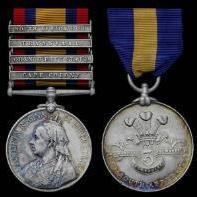

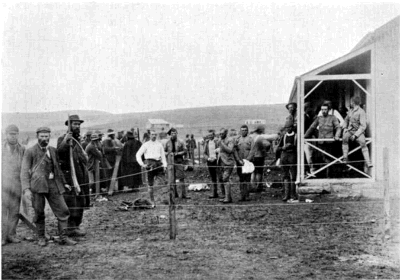
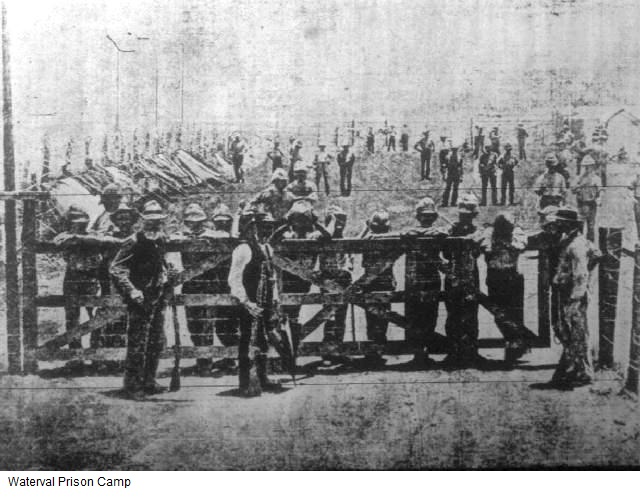


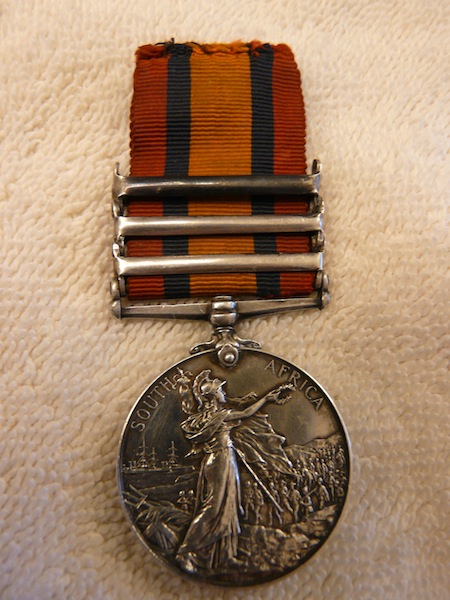
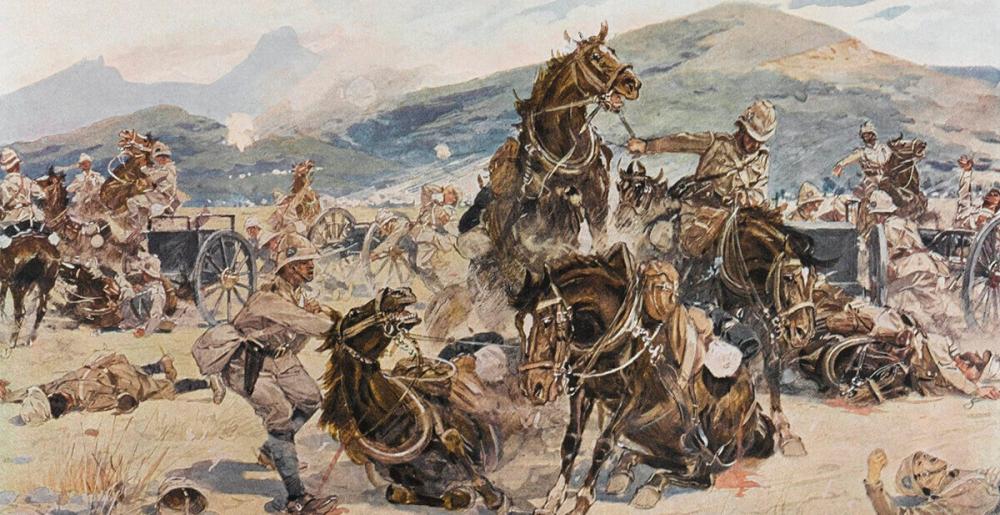
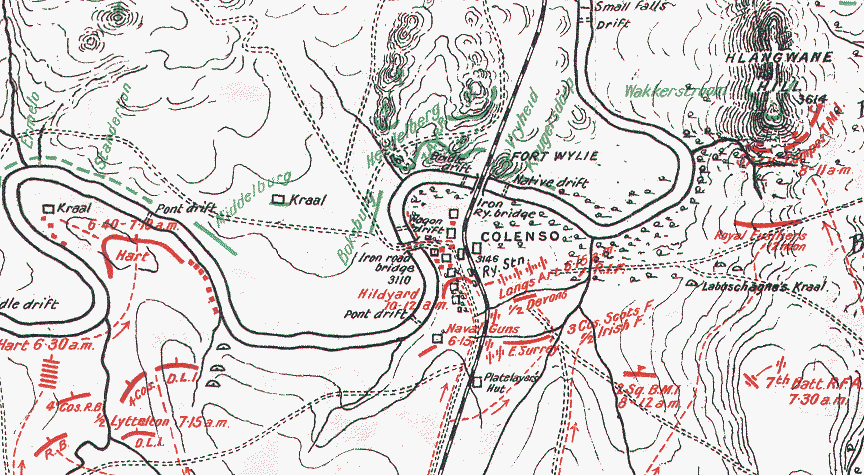
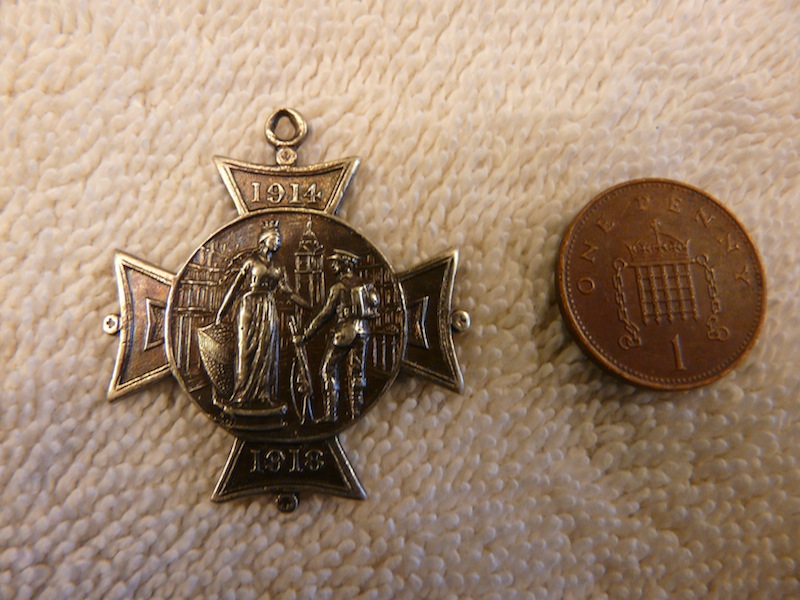

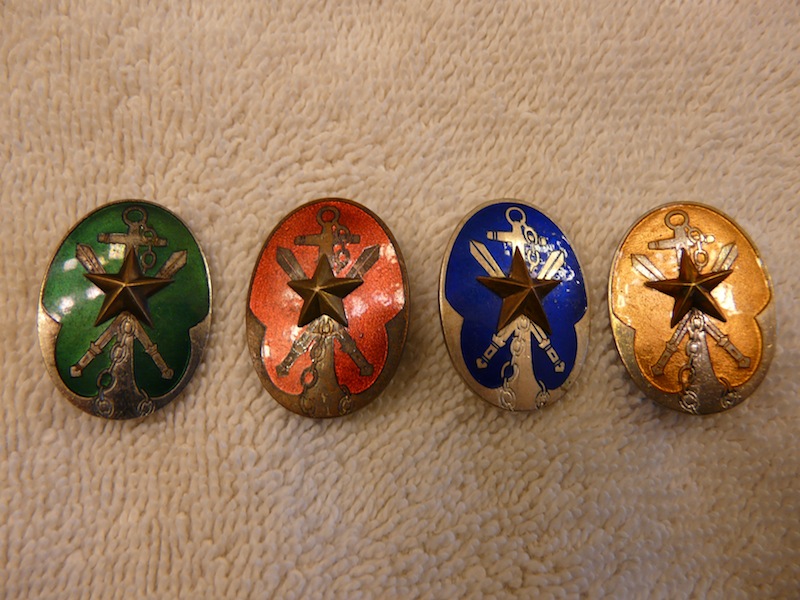
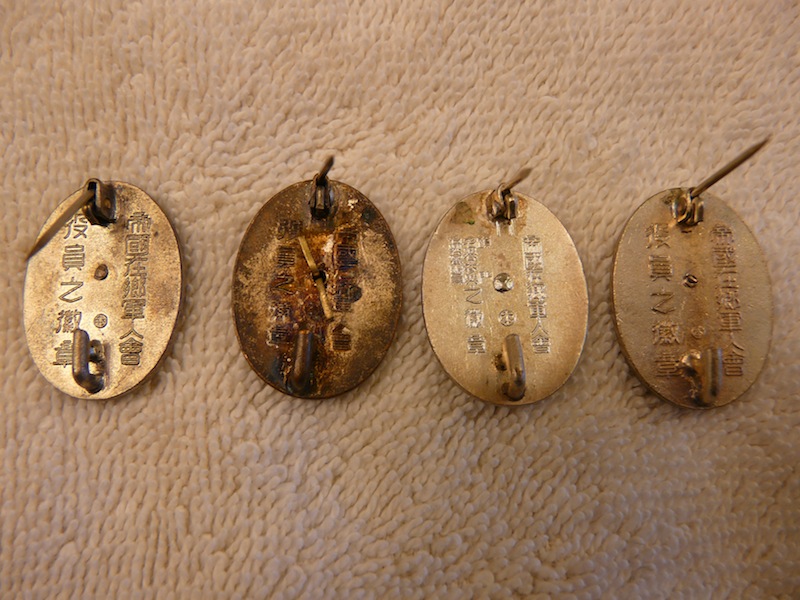
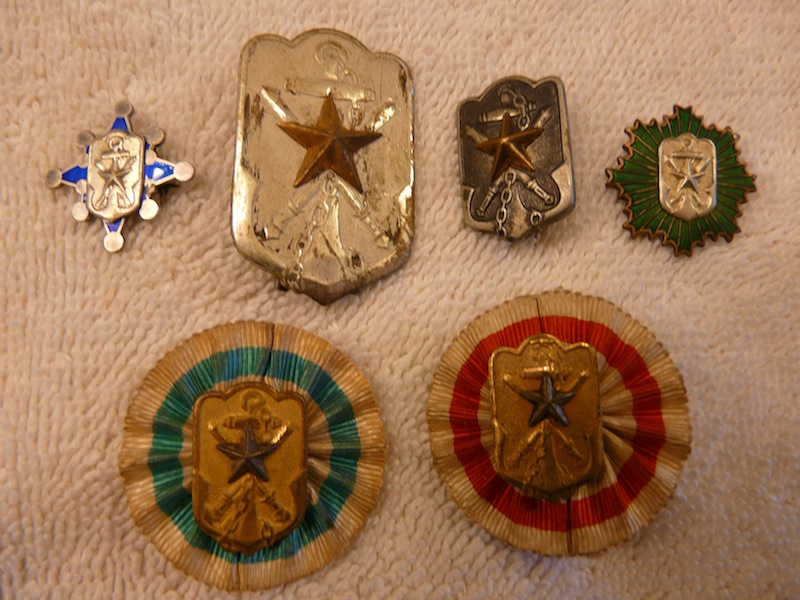
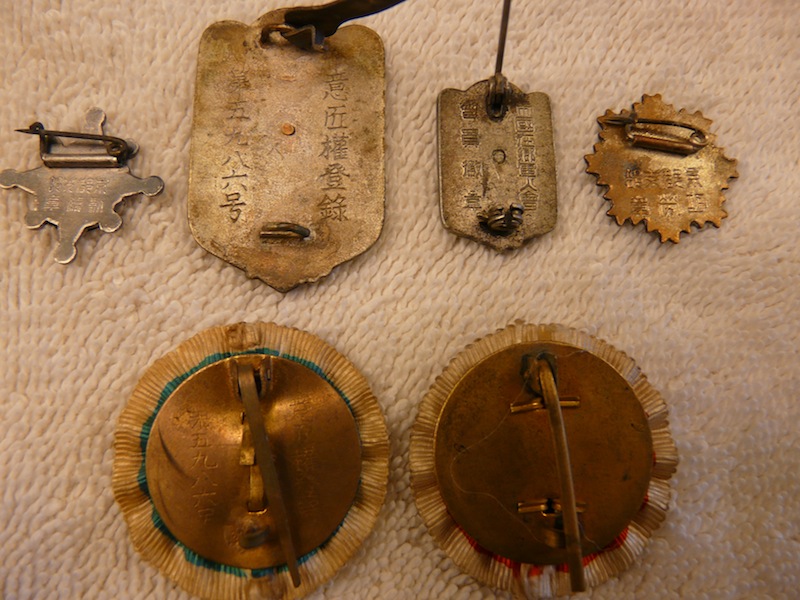

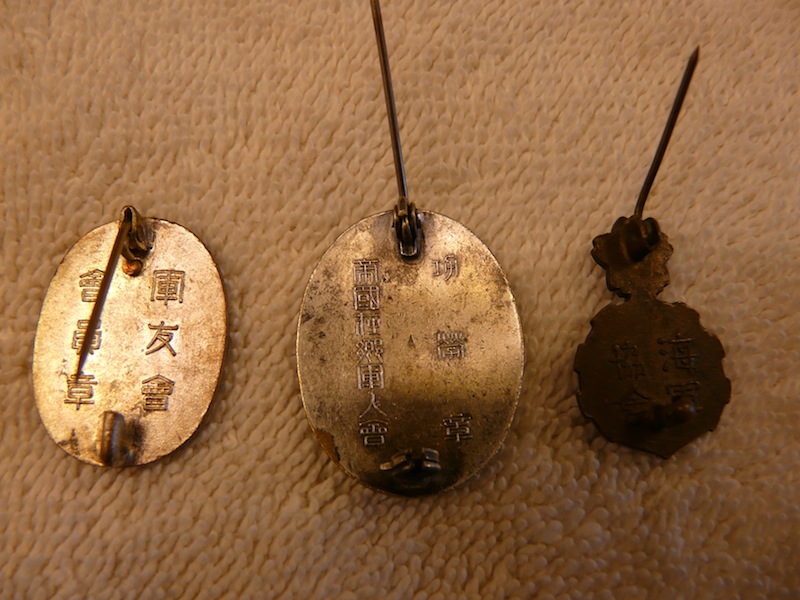
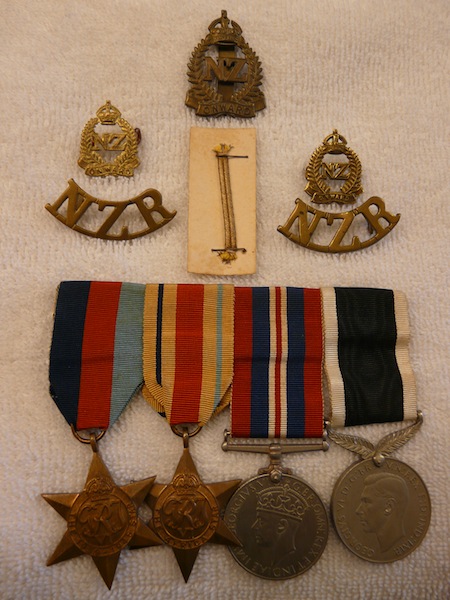
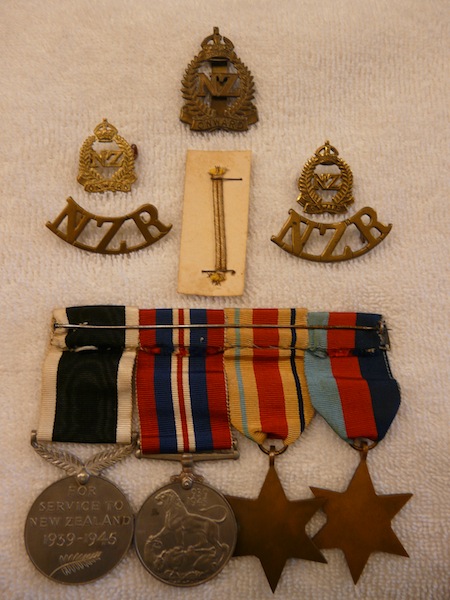
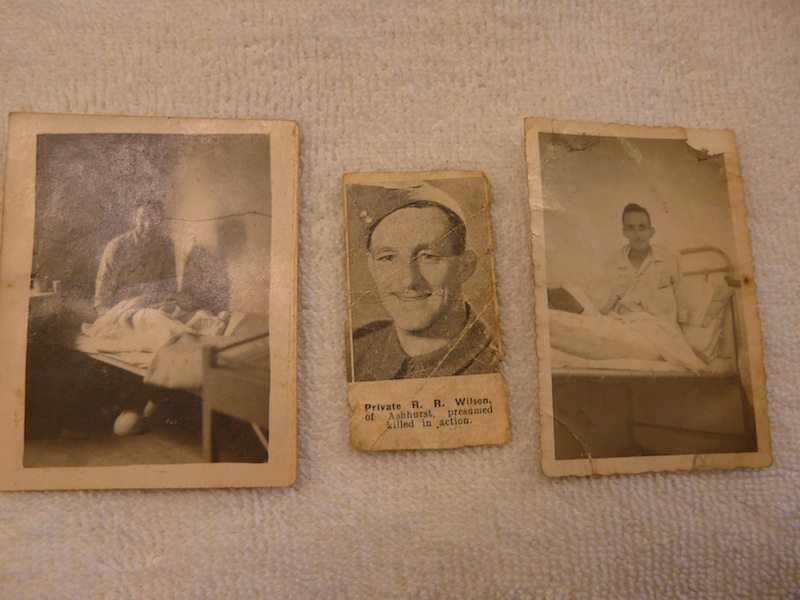


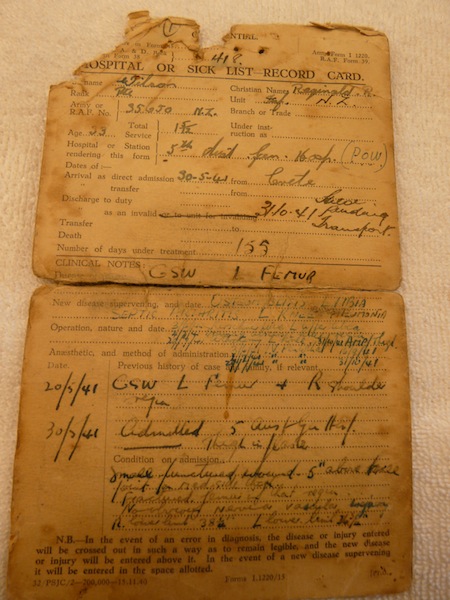


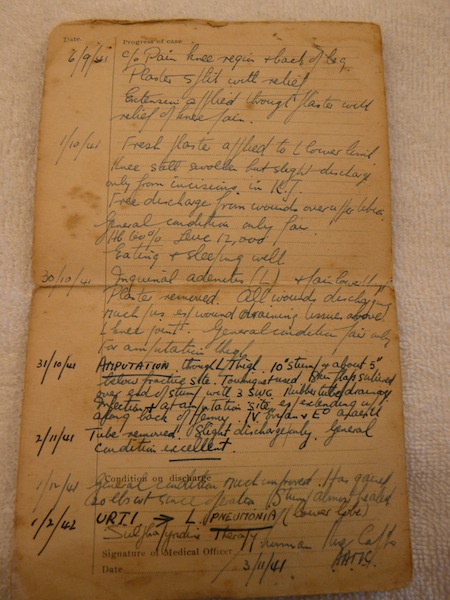
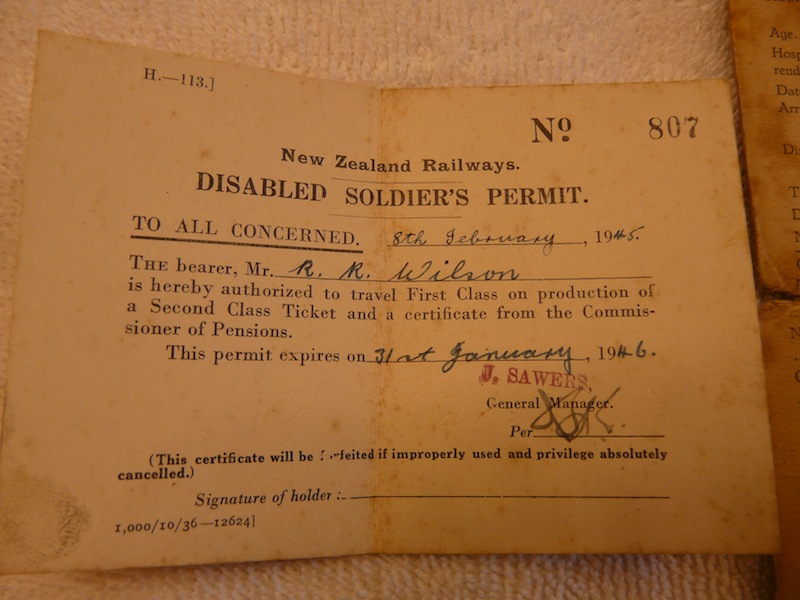
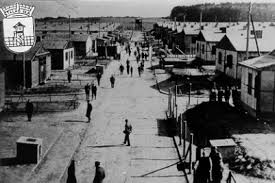

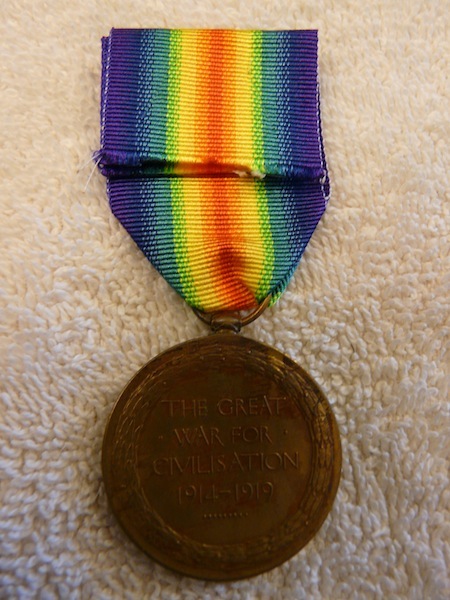

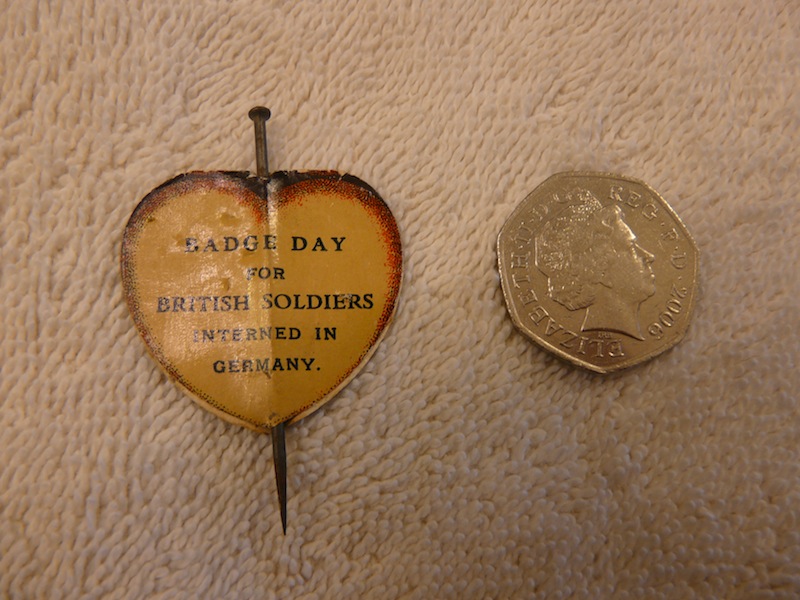



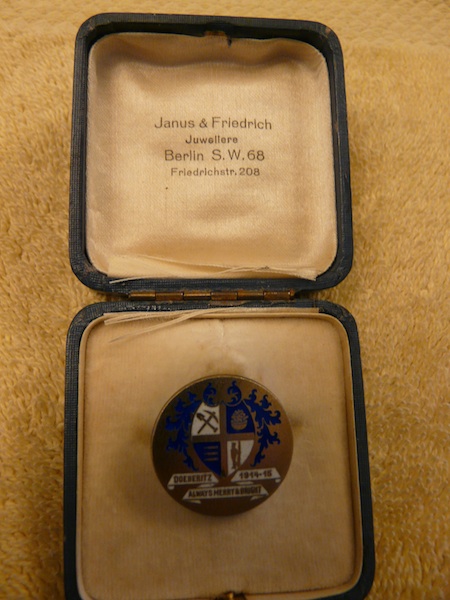
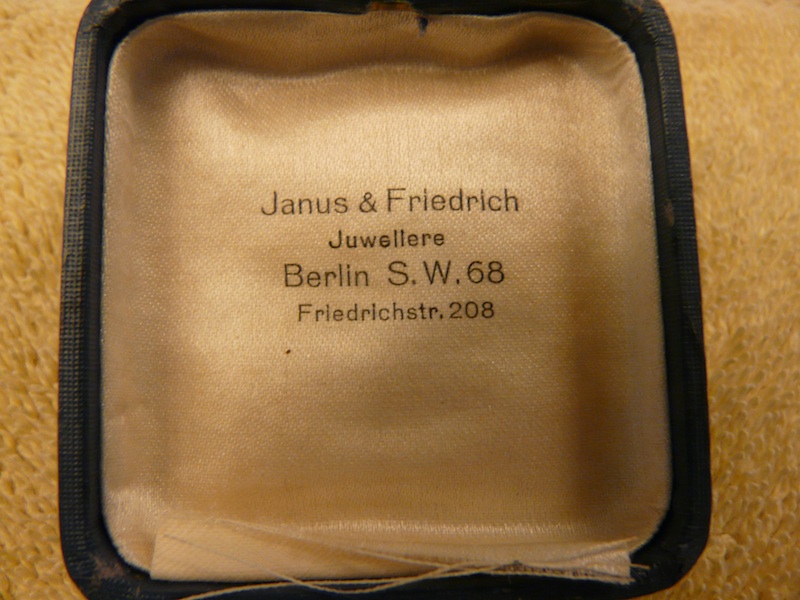
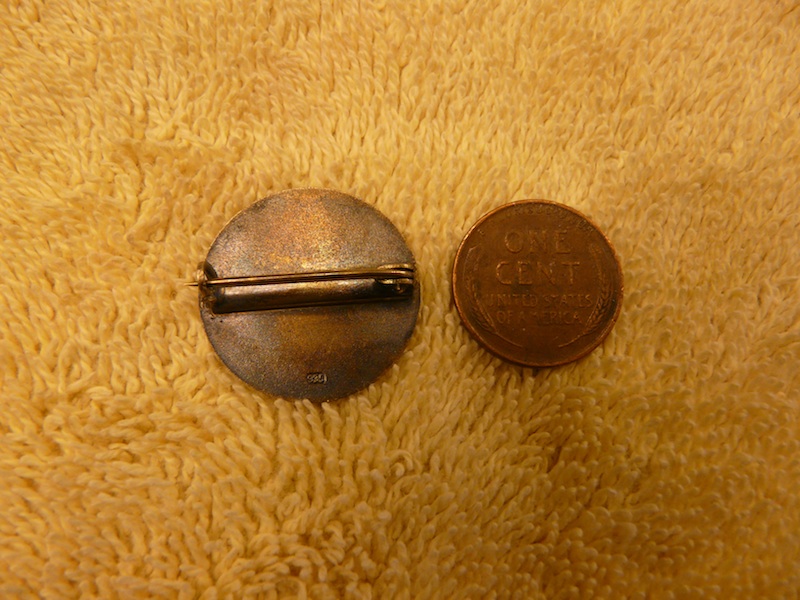

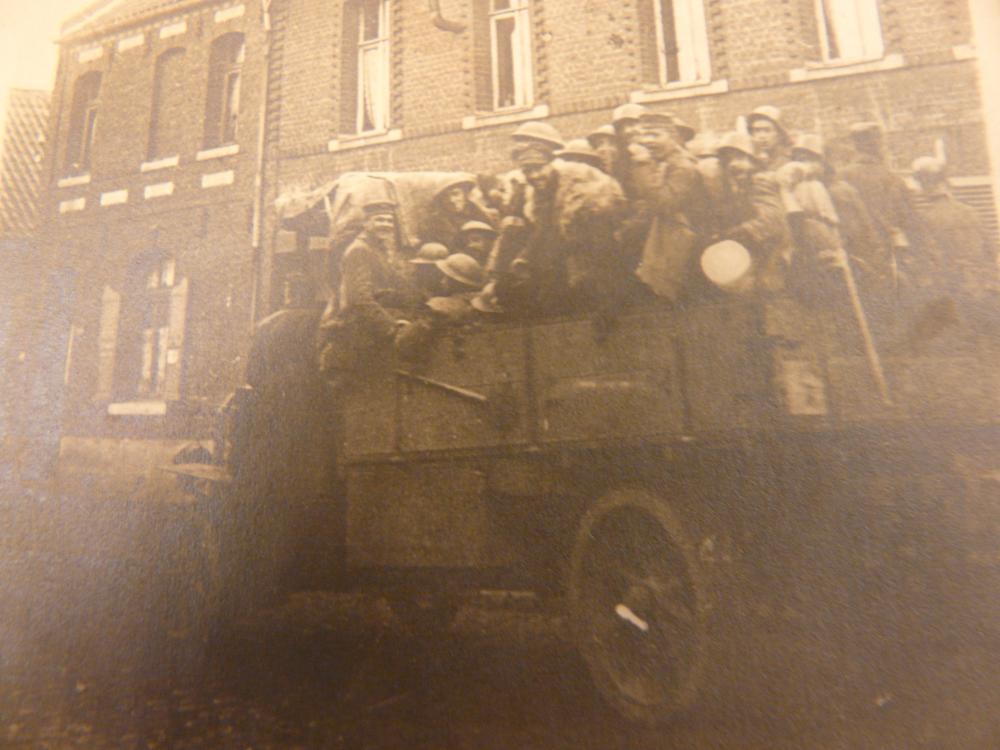

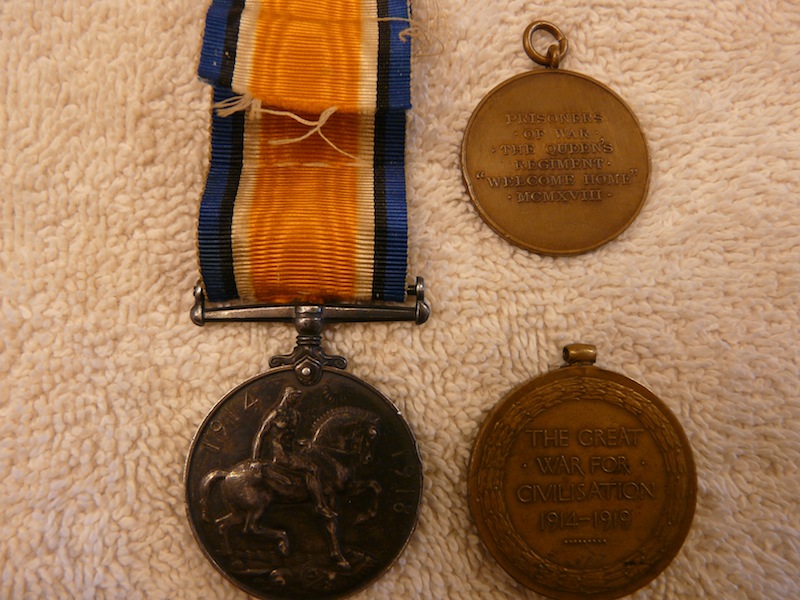
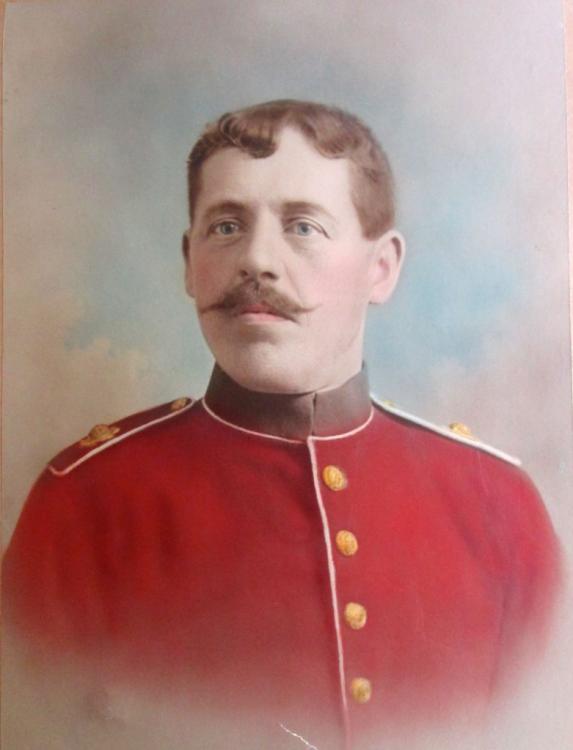

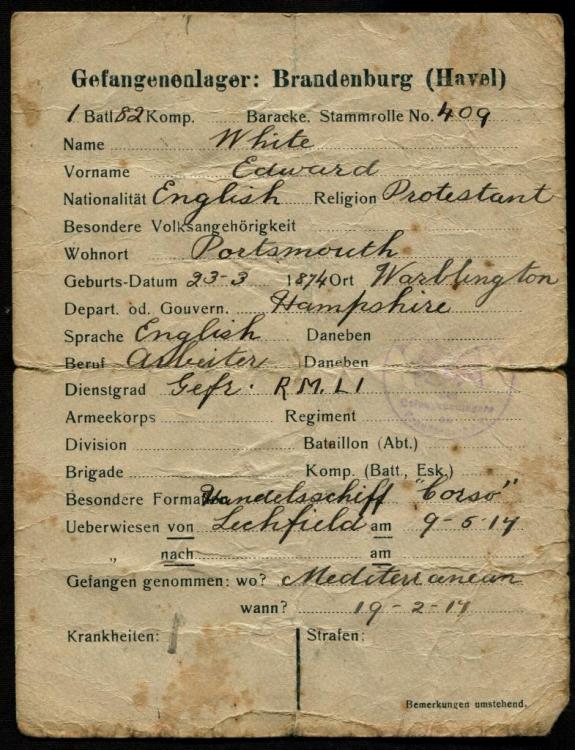




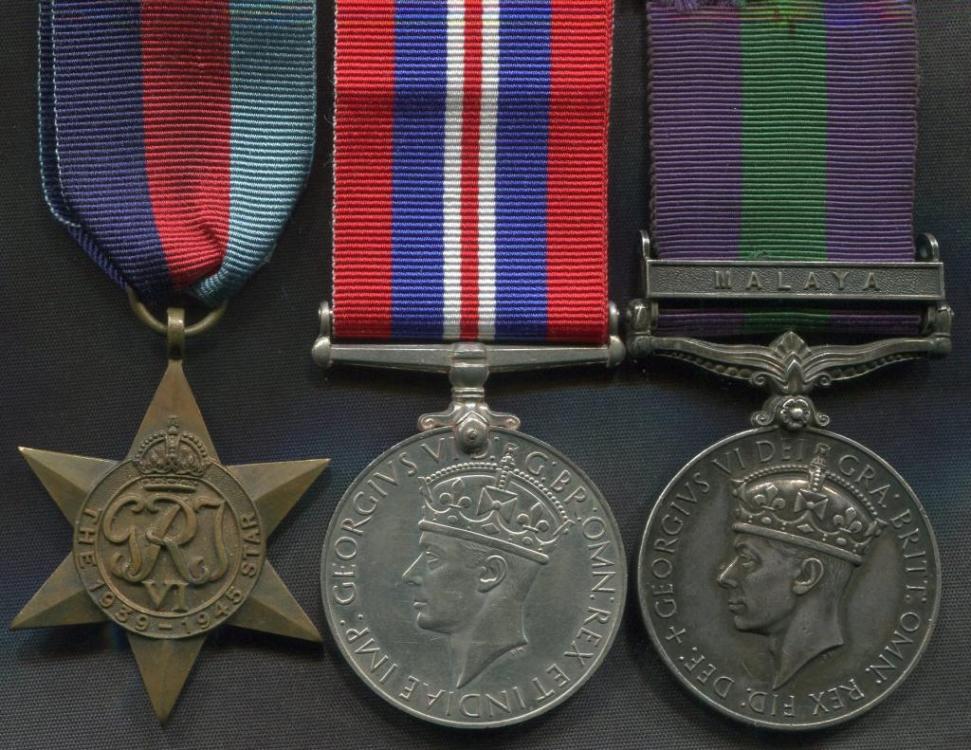

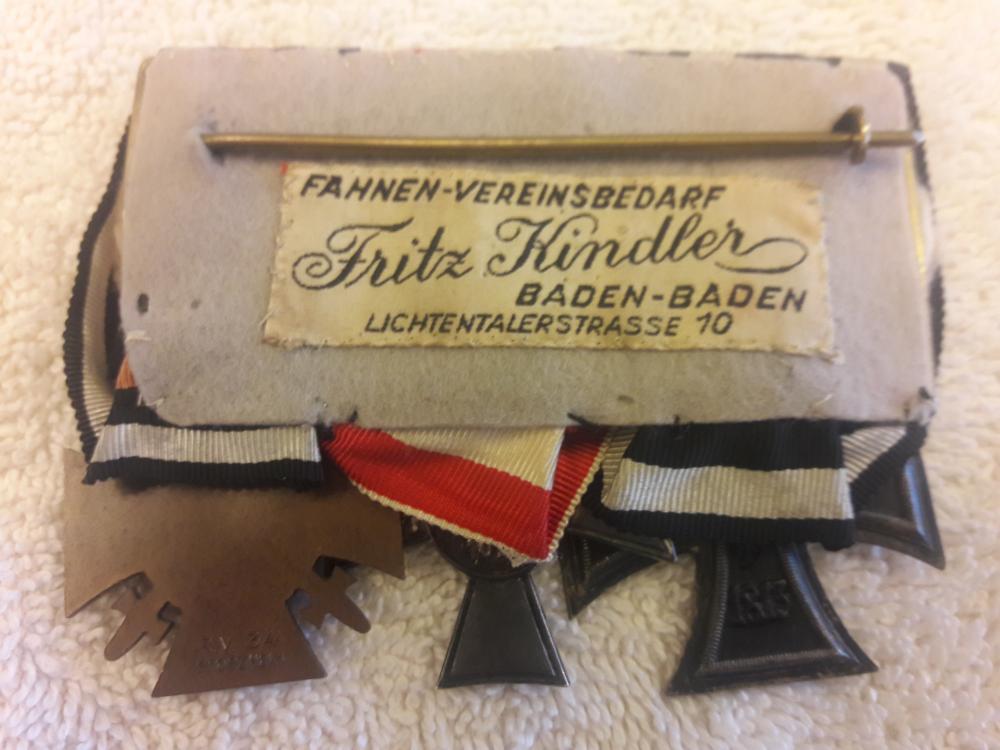
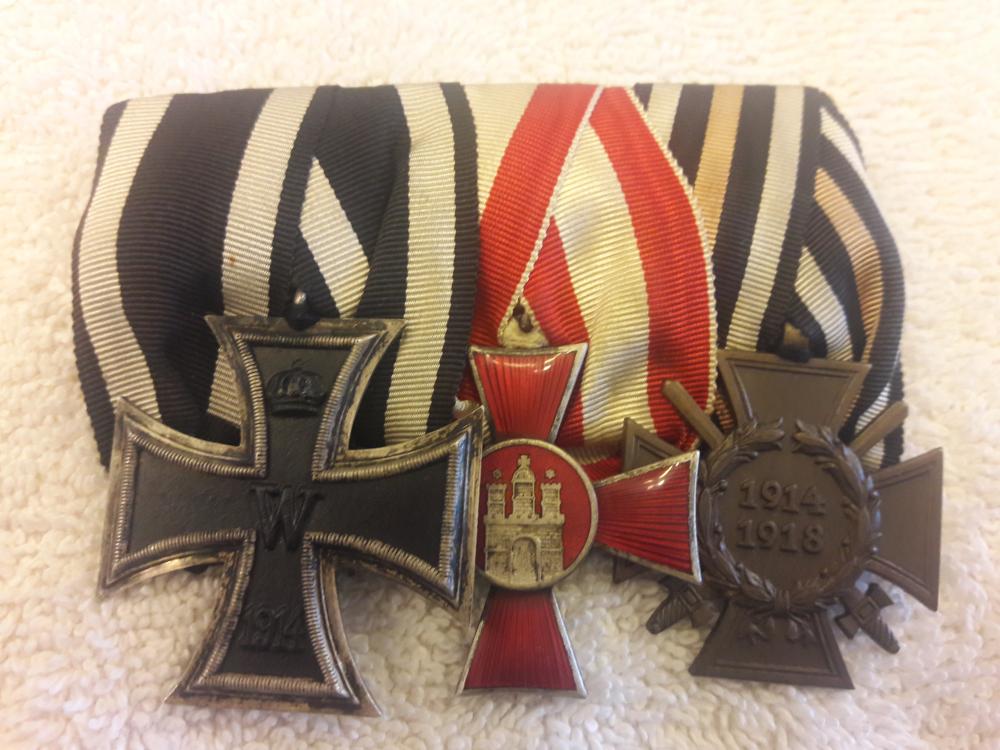
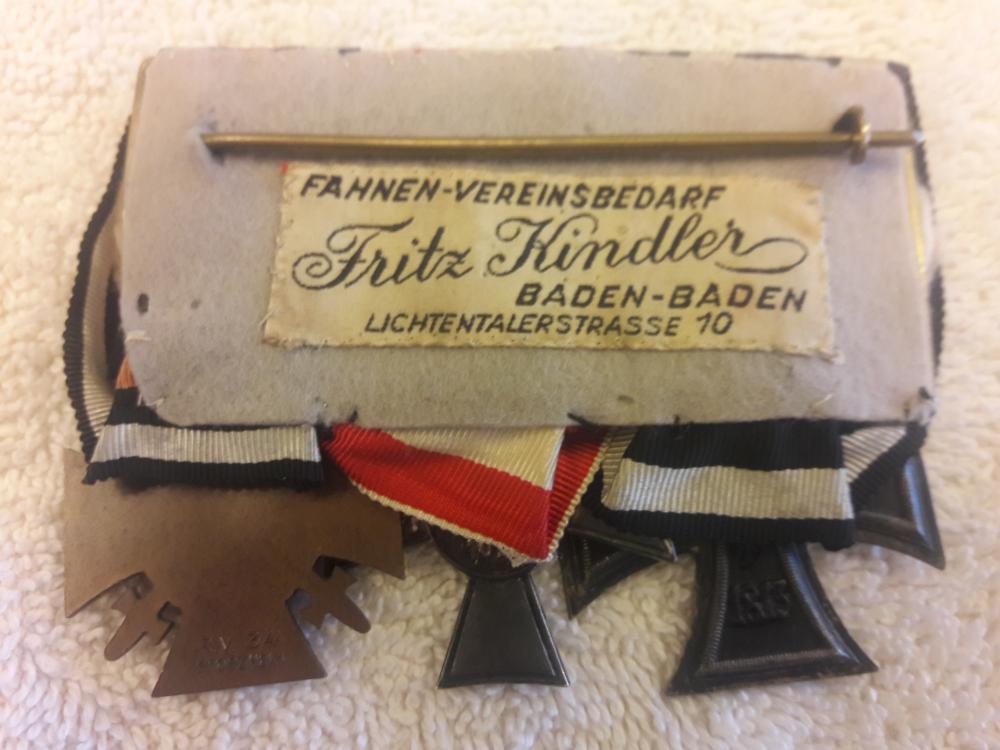
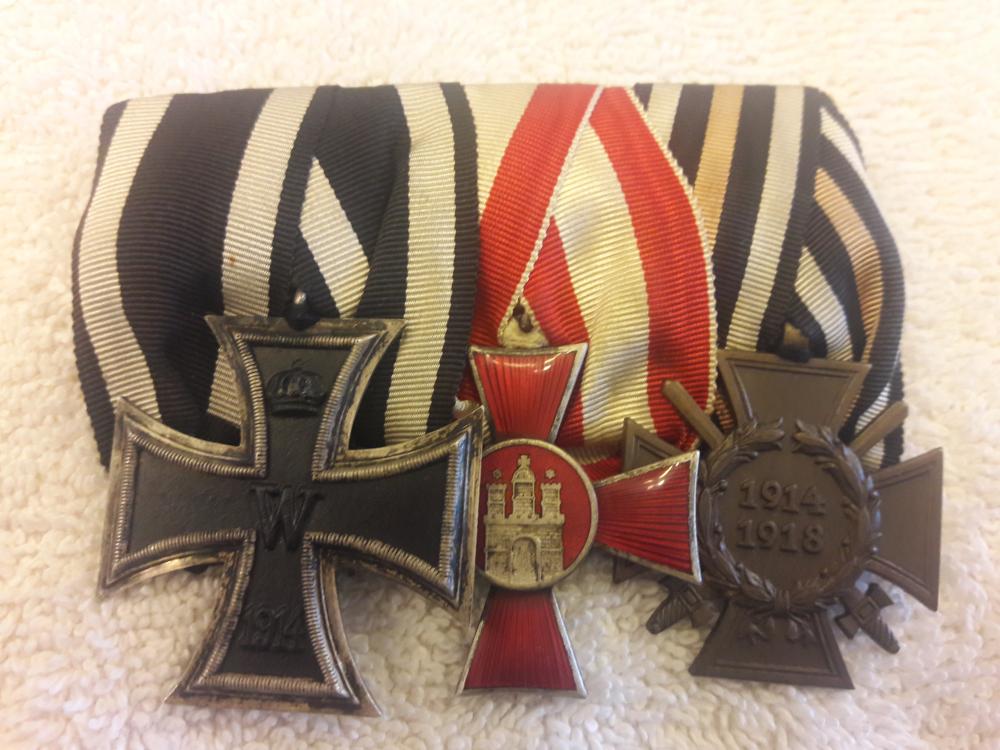
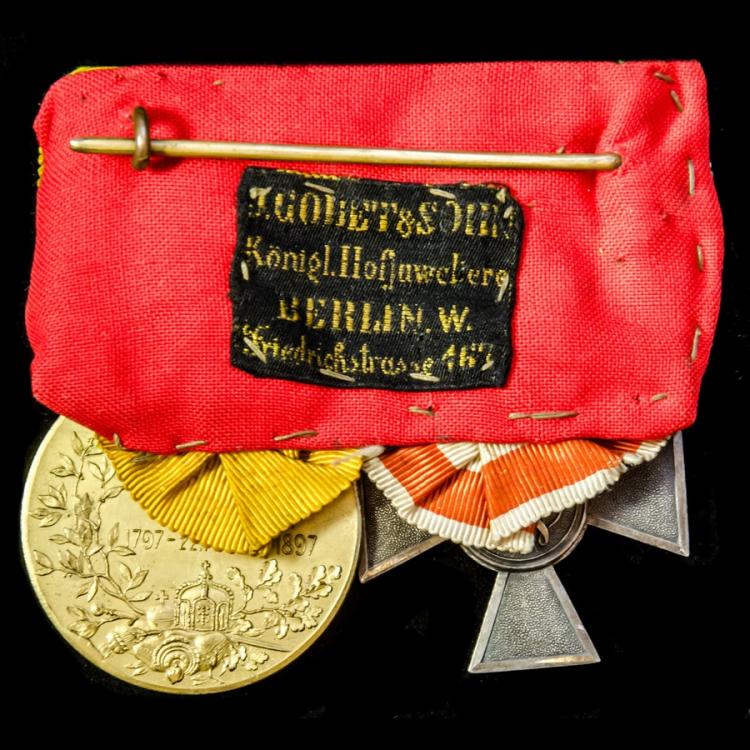

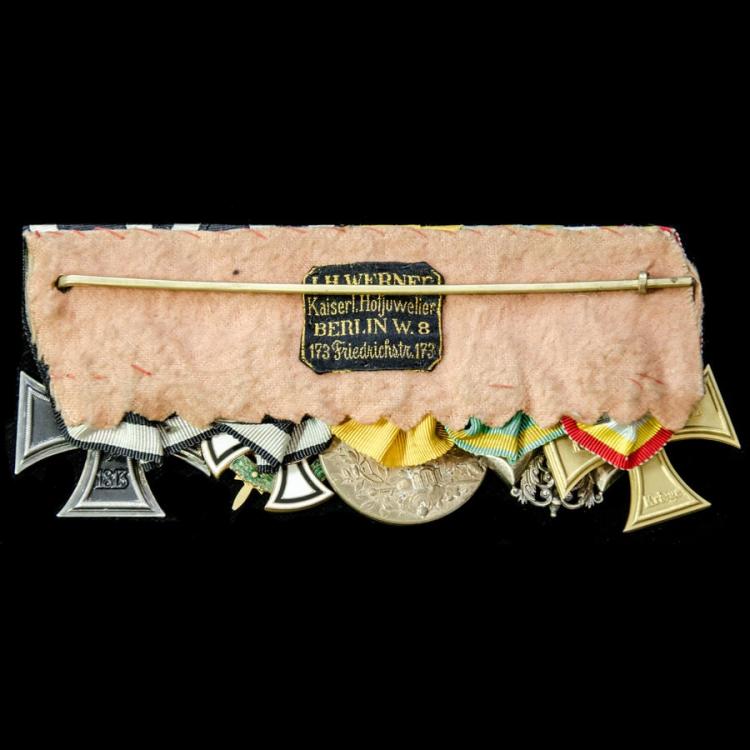
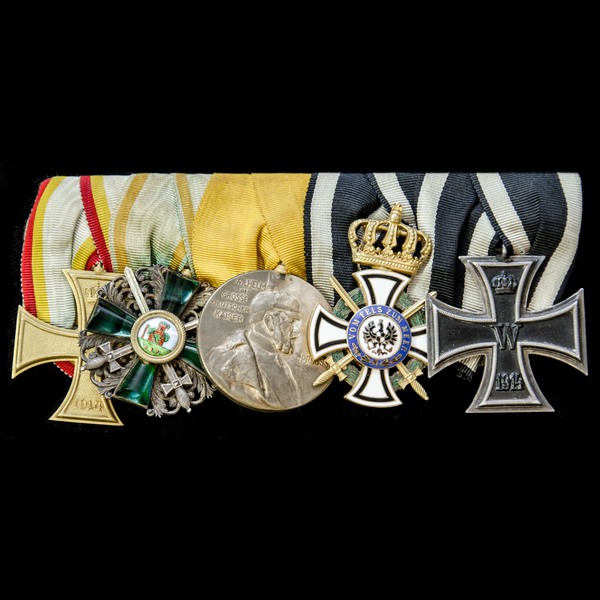

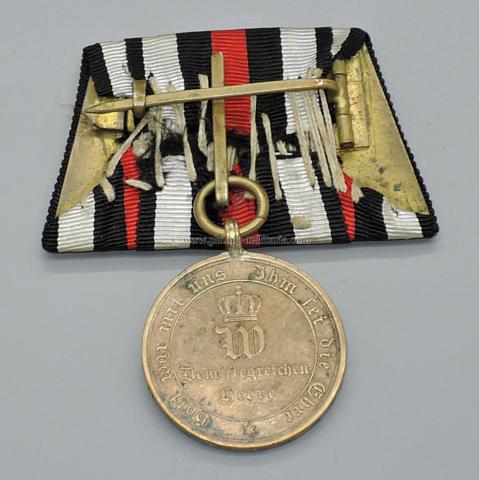
Small collection of POW groups. ** REGIONAL ADMIN. AWARD & CERT. OF MERIT. *A RECOMMENDED POST
in Great Britain: Orders, Gallantry, Campaign Medals
Posted
Some new info on Whitaker... from a gentleman and scholar, Adrian.
Morley Whitaker was born in London in 1872. He was 23 years old when he attested into the Cape Police (CP) on the 1 August 1895. He was a Clerk by Trade. He was a single man who had been in South Africa for over three years before joining the CP. His next of kin was William Whitaker who lived at 52 Luckett Road, London. He had previous service with the Hampshire Volunteers. He re-attested in August 1898. In August 1901, his regimental number changed to 111. By August 1905 he was a Sargent. He was still in the army in August 1907.